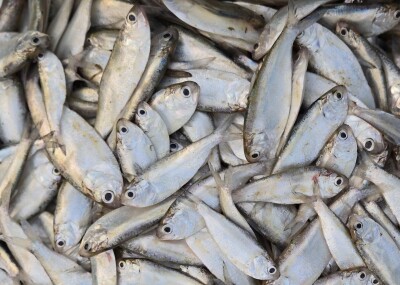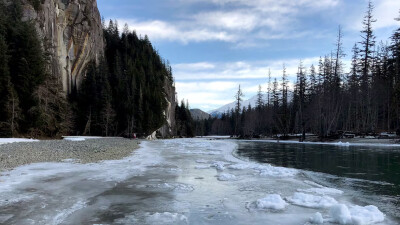Grand canyons
The Freedom pursues lobsters in the deep water below Georges Bank
By John Lee
On the way out to the fishing grounds in early November, the Freedom rolls. The day before we leave, Hurricane Noel has torn across Georges Bank, moving quickly — it blows out fast, consumed by cold water. Behind Noel a swell moves like mirrored hills, up and down, in an offshore hypnosis.
The visibility stretches to the curves of the earth. In the wheelhouse, Marc Ducharme, fast nearing 50, plays his electric guitar. He plays it from Newport, R.I., all the way to Nantucket Lightship.
"I should've been in a band," says Ducharme as he rips a blues chord.
Ducharme, of Portsmouth, R.I., has been the Freedom's only captain. The boat was built in the 1980s. She's a steel 72-footer with a deep draft and a low profile. She has no outriggers or stabilizers, no shelter deck across her rails.
"When it blows, you know it," says David Dellinger, the 23-year-old mate from Kingstown, R.I., who's been with Ducharme for three years. "She's a wet boat, but a good sea boat."
Dellinger's father runs an offshore lobster boat, also out of Newport. Ever since he was 14, Dellinger's been lobstering, most of it offshore. He bypassed high school to begin the trade, and one day would like to own his own boat.
Ducharme sets his trawls (also called strings or sets) of pots near the southwest part of Georges Bank in a small area of the outer continental shelf, specifically Lydonia, Gilbert and Oceanographer canyons. He has been fishing these three canyons for 20 years. He doesn't leave them and go somewhere else. Instead, he holds his ground and waits for the run. As with the inshore lobster fishery, territory lines are unspoken but understood.
"These sets are too valuable to leave," he says.
The canyons are shaped like hooked fingers, and the canyon walls slope down like the side of a mountain. Ducharme sets along the contour lines, between 70 and 200 fathoms. When he sets his gear he keeps an eye on the fish finder and on the loran, trying to keep his mile-long trawl within the narrow plateau of terraced bottom.
He turns the Freedom hard to port, hard to starboard, setting with precision. Ducharme fishes 44 pots to a trawl. At one end is a buoy and at the other end is a buoy and a high flyer. The high flyer has a radar reflector so it can be found at night.
The basic idea aboard the Freedom is to haul and bait all the trawls in three days and then head home. Dock-to-dock trip length is about five days.






